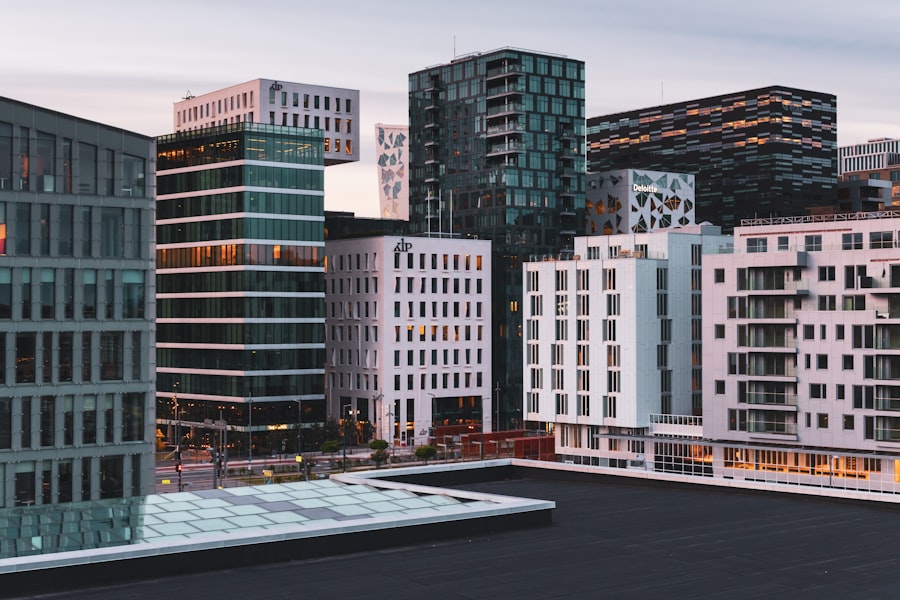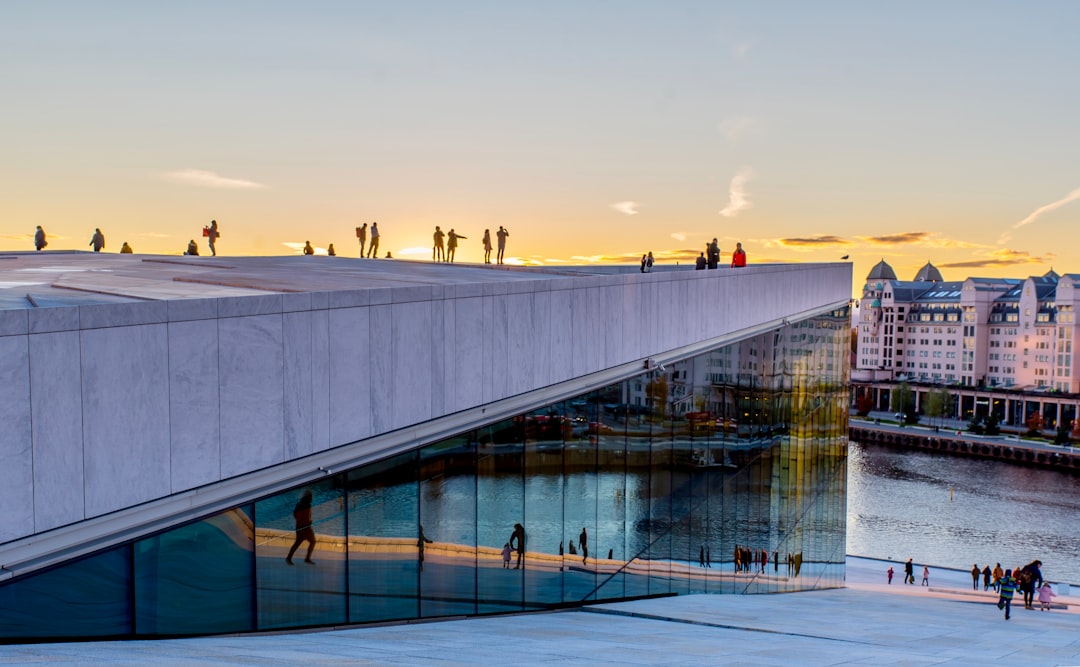‘Russetid’ is a unique and vibrant celebration that marks the end of secondary school for students in Norway. This period, which typically occurs in late April and culminates in mid-May, is characterised by a series of festivities, parades, and various activities that honour the transition from adolescence to adulthood. During this time, students, known as ‘russ’, don distinctive red or blue overalls, depending on their educational track, and engage in a variety of events that showcase their camaraderie and school spirit.
The celebration is not merely a farewell to school; it is a rite of passage that encapsulates the joy, freedom, and excitement of youth. The essence of ‘russetid’ lies in its communal nature. It is a time when students come together to celebrate their achievements, forge lasting friendships, and create unforgettable memories.
The atmosphere is electric, filled with laughter, music, and a sense of belonging. As the students participate in various activities, they also reflect on their journey through education and prepare for the next chapter of their lives. This period is not just about revelry; it serves as a significant cultural event that highlights the importance of youth in Norwegian society. Schedule a one-on-one consultation with our relocation specialists to simplify your move to Norway.
Summary
- ‘Russetid’ is a Norwegian tradition where high school graduates celebrate the end of their exams with a month-long party.
- The history of ‘Russetid’ dates back to the 1700s and has evolved into a month of festivities, parties, and pranks.
- ‘Russetid’ differs from graduation celebrations in other countries due to its duration, intensity, and focus on partying.
- The traditions of ‘Russetid’ include wearing red overalls, participating in parades, and creating ‘russekort’ – personalized cards exchanged with friends.
- Alcohol plays a significant role in ‘Russetid’ celebrations, leading to concerns about excessive drinking and its impact on young people.
The History of ‘Russetid’
The origins of ‘russetid’ can be traced back to the late 19th century, with its roots embedded in the traditions of Norwegian students celebrating their graduation. Initially, the festivities were modest and primarily involved gatherings among classmates. However, as time progressed, ‘russetid’ evolved into a more elaborate celebration, incorporating various customs and rituals that have become synonymous with the event today.
The first documented instance of students wearing special clothing to signify their graduation dates back to 1905, marking the beginning of what would become a cherished tradition. Over the decades, ‘russetid’ has undergone significant transformations, influenced by societal changes and cultural shifts. The introduction of the ‘russ’ overalls in the 1970s marked a pivotal moment in the celebration’s history.
These colourful garments became a symbol of unity among students and a way to express individuality within the collective experience. As ‘russetid’ continued to grow in popularity, it began to attract attention beyond Norway’s borders, with international observers intrigued by this distinctive celebration that encapsulates the spirit of youth.
How ‘Russetid’ Differs from Graduation Celebrations in Other Countries

While many countries have their own graduation celebrations, ‘russetid’ stands out due to its unique blend of tradition, revelry, and community spirit. In contrast to more formal graduation ceremonies often seen elsewhere, such as cap-and-gown events in the United States or solemn ceremonies in the UK, ‘russetid’ embraces a more carefree and exuberant approach. The focus is not solely on academic achievement but also on celebrating friendships and shared experiences during the school years.
Another distinguishing feature of ‘russetid’ is its duration and intensity. The celebration spans several weeks, allowing students ample time to engage in various activities, including parties, parades, and themed events. This extended period fosters a sense of camaraderie among participants as they navigate the highs and lows of their final days in secondary school together.
In contrast, many other countries condense their graduation celebrations into a single day or weekend, lacking the same level of communal engagement that characterises ‘russetid’.
The Traditions and Customs of ‘Russetid’
The traditions associated with ‘russetid’ are as diverse as they are vibrant. One of the most iconic customs is the wearing of the ‘russ’ overalls, which are often adorned with patches and decorations that reflect personal interests or school affiliations. These garments serve as a visual representation of unity among students while allowing for individual expression.
Additionally, many students personalise their overalls with slogans or symbols that encapsulate their experiences during their school years. Another cherished tradition is the organisation of ‘russebusser’, which are buses rented by groups of students to travel together during the celebration. These buses become mobile party venues, complete with music, decorations, and sometimes even themed events.
The camaraderie fostered within these groups enhances the overall experience of ‘russetid’, as students bond over shared adventures and create lasting memories together. Furthermore, various games and challenges are often incorporated into the festivities, adding an element of friendly competition to the celebrations.
The Role of Alcohol in ‘Russetid’
Alcohol plays a significant role in many aspects of ‘russetid’, contributing to both its celebratory atmosphere and its controversies. For many students, this period represents their first taste of independence and adulthood, often leading to increased experimentation with alcohol consumption. While some view this as a rite of passage, it has also raised concerns regarding safety and responsible drinking among young people.
The prevalence of alcohol during ‘russetid’ has sparked debates within Norwegian society about the implications for youth culture. On one hand, proponents argue that moderate drinking can enhance social bonding and enjoyment during this fleeting time in life. On the other hand, critics highlight the potential dangers associated with excessive drinking, including health risks and impaired decision-making.
As such, discussions surrounding alcohol consumption during ‘russetid’ continue to evolve as society grapples with finding a balance between celebration and responsibility.
The Importance of ‘Russekort’ in ‘Russetid’ Celebrations

A central element of ‘russetid’ is the creation and exchange of ‘russekort’, which are personalised cards that students design to commemorate their time in secondary school. These cards often feature photographs, witty slogans, and inside jokes that encapsulate shared experiences among friends. The act of giving and receiving ‘russekort’ fosters connections between students and serves as a tangible reminder of their time together.
The significance of ‘russekort’ extends beyond mere nostalgia; they also play a role in building social networks among students. As these cards circulate during ‘russetid’, they facilitate interactions between different groups and encourage friendships across schools and regions. In this way, ‘russekort’ contribute to the overall sense of community that defines the celebration while allowing students to express their individuality within a collective experience.
How ‘Russetid’ is Celebrated in Different Parts of Norway
While ‘russetid’ is celebrated nationwide, regional variations add richness to the festivities across Norway. In larger cities like Oslo and Bergen, celebrations often feature grand parades with elaborate floats showcasing creativity and school pride. These events attract large crowds and create an electric atmosphere as students march through city streets adorned in their colourful overalls.
In contrast, smaller towns may have more intimate celebrations characterised by local traditions and customs. Here, students might gather for bonfires or community events that emphasise connection with their surroundings. Regardless of location, however, the core essence of ‘russetid’ remains consistent: it is a time for students to come together, celebrate their achievements, and embrace the spirit of youth.
The Challenges and Controversies Surrounding ‘Russetid’
Despite its joyous nature, ‘russetid’ is not without its challenges and controversies. Concerns regarding safety during this period have prompted discussions about responsible behaviour among participants. Instances of excessive drinking or reckless behaviour can overshadow the positive aspects of the celebration, leading to calls for increased awareness around health and safety.
Moreover, there have been debates about inclusivity within ‘russetid’. Some argue that certain traditions may inadvertently exclude students who do not conform to specific norms or expectations surrounding participation. As society evolves, there is an ongoing conversation about how to ensure that all students feel welcome and included in these celebrations while maintaining the spirit of camaraderie that defines ‘russetid’.
Tips for Surviving and Enjoying ‘Russetid’
For those embarking on their own ‘russetid’ journey, preparation is key to ensuring an enjoyable experience. First and foremost, it is essential to establish boundaries around alcohol consumption to promote safety while still enjoying the festivities. Setting limits can help prevent excessive drinking and allow for more meaningful connections with peers.
Additionally, staying organised can enhance the overall experience during this busy period. Keeping track of events, activities, and social engagements can help ensure that no memorable moments are missed. Finally, embracing spontaneity can lead to unexpected adventures; some of the best memories often arise from unplanned experiences shared with friends.
The Impact of ‘Russetid’ on Norwegian Society
The influence of ‘russetid’ extends beyond individual celebrations; it plays a significant role in shaping Norwegian society’s cultural landscape. This period fosters a sense of community among young people while also highlighting important themes such as friendship, resilience, and personal growth. As students navigate this transitional phase together, they develop skills that will serve them well in adulthood.
Moreover, ‘russetid’ has become an integral part of Norway’s national identity. The celebration reflects broader societal values surrounding youth culture and education while also serving as a reminder of the importance placed on community engagement within Norwegian society. As such, ‘russetid’ continues to resonate deeply with both participants and observers alike.
The Future of ‘Russetid’ and its Evolution in Modern Times
As society evolves, so too does ‘russetid’. Contemporary influences such as social media have transformed how students engage with this celebration; platforms like Instagram allow for real-time sharing of experiences while fostering connections beyond geographical boundaries. This digital dimension adds another layer to the festivities while also raising questions about authenticity and representation within these online spaces.
Looking ahead, it will be interesting to see how ‘russetid’ continues to adapt to changing societal norms while preserving its core essence. Discussions surrounding inclusivity may lead to new traditions that embrace diversity within student populations while maintaining the celebratory spirit that defines this unique rite of passage. In conclusion, as you prepare for your own journey through ‘russetid’, consider seeking support from organisations like the Norway Relocation Group which can provide valuable resources for navigating this exciting time in your life.
Additionally, if you’re looking to immerse yourself further into Norwegian culture during this period or beyond, consider enrolling in Norwegian courses at the NLS Norwegian Language School in Oslo where you can enhance your language skills while connecting with fellow learners who share your passion for Norway’s rich traditions.
Register for a Norwegian class at the NLS Norwegian Language School now!

